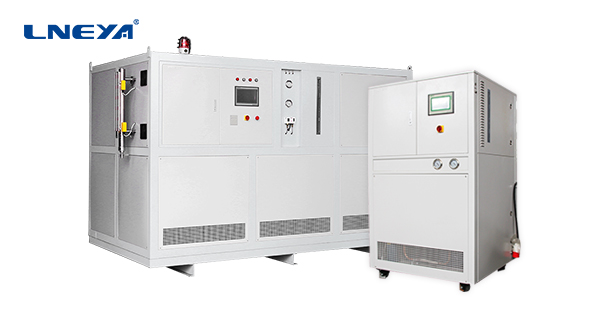Description of power consumption in LNEYA large refrigeration unit
In the process of operation, the cooling capacity and working conditions will affect the power consumption of the entire large refrigeration unit, but in order to avoid unnecessary power consumption, we need to understand the other power consumption in the refrigeration unit.
When the scale of the wall of the condenser of the large refrigeration unit reaches 1.5 mm, the condensation temperature rises by 2.8 °C than that before the fouling, and the power consumption increases by 9.7. The surface of the evaporator is covered with a layer of frost, which reduces the heat transfer coefficient. Especially when the outer surface of the finned tube is frosted, it not only increases the heat transfer resistance, but also makes the air flow between the fins difficult, reducing the appearance of the heat. Thermal coefficient and heat dissipation area. When the ambient temperature is lower than 0 °C, the temperature difference between the two sides of the evaporator tube set is 10 °C. After the evaporator is operated for one month, the heat transfer coefficient is about 70 before frosting.
The gas sucked by the compressor of the large refrigeration unit allows a certain degree of superheat, but the superheat is too large, the specific volume of the suction gas increases, the cooling capacity decreases, the relative power consumption increases, the compressor comes to frost, and the small suction valve is quickly closed. , drastically reduce the amount of cold produced, and relatively increase the power consumption.
As the evaporation temperature of large refrigeration units decreases, the compression ratio of the compressor increases, and the energy consumption per unit of production increases. When the evaporation temperature is lowered by 1 ° C, it consumes 3% to 4% more. Therefore, the evaporation temperature difference is reduced as much as possible, and the evaporation temperature is increased, which not only saves power consumption, but also improves the relative humidity of the cold room.
As the condensing temperature of the large refrigeration unit increases, the compression ratio of the compressor increases, and the energy consumption per unit of cooling capacity increases. When the heat exchange surface of the condenser and evaporator of a large refrigeration unit is covered with an oil layer, the condensation temperature rises and the evaporation temperature decreases, resulting in a decrease in cooling capacity and an increase in power consumption. When air collects in the condenser, it causes an increase in the condensing pressure and an increase in the power consumption of the compressor.
When the same large-scale refrigeration unit has the same structure and rotating speed, the cooling capacity and power consumption are different when the operating conditions are different. Therefore, the operator is operating after understanding and avoiding the increase of the operating cost of the enterprise.

 LNEYA Industrial Chillers Manufacturer Supplier -
LNEYA Industrial Chillers Manufacturer Supplier -












